Can A Quaker School Fix a Broken System?
Friends schools are known for their holistic approach to education, and Friends Center for Children in New Haven, Connecticut, is no different. But this early childhood program has gone a few steps further. They have piloted life-changing initiatives that ensure their school community is representative of the community in which they live — from rent-free homes for teachers to tuition on a sliding scale that makes Friends Center affordable for all families.
Featured in the New York Times and on CBS News, Friends Center is getting noticed as they embody the Quaker Testimonies in new and creative ways.
Subscribe so you don’t miss an episode!
Leave a comment below to share your stories and thoughts!
Download the transcript and discussion questions.
Discussion Questions
- The buildings at Friends Center for Children are designed with great intentionality (i.e. low windows for smaller children to see outside). How does this make you think differently about the spaces you occupy?
- Children and employees at Friends Center for Children use a mood meter to share how they are doing each day. Try this mood meter yourself for a few days. How does this daily self-evaluation inform the rest of your day?
Allyx Schiavone: Are you feeling satisfied? Do you feel seen? Do you feel heard? You know that’s what emotional well being means to us, and that is 100 percent a product of our Quaker values. It really comes from that belief system that there is light in everyone, and we need to create space for that to grow.
Various: Thee Quaker Podcast: Story, spirit, sound.
Georgia: Hi I’m Georgia Sparling. Jon is away today.
For this week’s episode, I got to visit an inspiring Friends school that is putting the Quaker testimonies into action. Now my previous job as a community journalist frequently took me to school committee meetings — and I mean a lot of school committee meetings. The superintendent and I were basically on a first name basis and you know I should probably send him some Christmas cards, but anyway, I’ve seen how schools are run. I’ve visited lots of classrooms, but none of them were like Friends Center for Children.
I won’t give too many details here in the intro, but Friends Center has an approach to education that is founded on creating a community inside its walls that looks like the one outside its walls — and that’s racially and economically. And I’m honored that they let me stop by their campus in New Haven, Connecticut, to learn how they do it.
So even if, like me, you do not have kids, I think there’s a lot to learn and appreciate about how a Quaker approach can transform a space and transform the people in it. So let’s get started.
[Sound of kids playing]
Allyx: The space was designed with young children in mind.
Georgia: That’s Allyx Schiavone, the executive director of Friends Center for Children in New Haven, Connecticut. I stopped by the center on a warm July afternoon to meet Allyx and get a tour. tour.
Friends Center for Children has babies up through age six and everyone.That’s because the center was founded by New Haven Friends Meeting, which you can see through the front windows. The center has a Quakerlyness that is really foundational to everything that happens here. From the floor to ceiling windows to the teacher housing, this center is doing something that other early childhood centers just aren’t and they’re hoping other people — Quakers and otherwise — will follow suit.
Wendy Kravitz: It was after a Sunday worship, and we had planned to have a session to brainstorm ideas. And we went down into the social area and literally broke some homemade bread and the idea of creating a friends school was one of the ideas that came up.
Georgia: That’s Wendy Kravitz, a member of New Haven Friends, a founder of the Friends Center for Children, and a member of the Quaker Advisory Council for the center. She says the meeting spend a long time discussing how they could be active in the community and the idea for a school resonated with many members.
Wendy: It was a long and winding road. We took a number of years just to discuss the concept of creating a friends school in New Haven.
went out into the community and talked to a lot of organizations, other schools, individuals who were really plugged into New Haven about our idea of creating an elementary school.
And what we found is, very few people in Connecticut have any idea who Quakers or Friends are, let alone what distinguishes a Friends school.
Georgia: So they had to explain how Quaker’s approach education – with the whole child in mind.
Through this process, the Friends also found a need in their community that they hadn’t known about.
Wendy Kravitz: What we consistently heard was, how pressing the need was for care for infants, toddlers, and preschoolers in New Haven. At that time, and I think it hasn’t changed a huge amount, for every 100 infants needing childcare, so parents could go back to work or whatever, only two slots existed in the city of New Haven.
Georgia: Those numbers aren’t unique to New Haven or even to cities. Allyx paints a dire picture of the landscape of early childhood education in America.
Allyx: What’s really remarkable about the work we’re doing here, and what about, you know, where we are city in New Haven, is it reflects the entire country. It’s we’re a childcare desert here, even though we’re a city. And, you can go to a rural area, and it’s equally a child care desert. What it means is that for every three children, there’s only one spot. So that’s sort of the definition of a child care desert. And we are so desperate here. We have 300 people on our waiting list. There’s nowhere for families to go. We have families calling us crying because they can’t find spots. We have families who let us know, you know, before their before they’ve I say it, you know, facetiously, but I know that people are pregnant before their families do, because they have to let us know in order to get on the waitlist to be able to have a spot.
You know, 10 months you know, when their child turns three months old. I mean, it’s really an unfortunate system that we have designed because it works for no one, right? Parents pay too much. The educators in the system make too little. The providers programs like ours, have to fundraise just to stay alive, and then the children are just caught in the middle of that. I mean, we couldn’t have advised a worse system, honestly, if we tried.
Georgia: Allyx calls early childhood education, which encompasses the years from birth to five or six years old, the ugly stepchild of the US education system.
Allyx: So if the system’s neglected, we are doubly neglected, underfunded, under-resourced, overburdened, and it’s because we are 98% female and disproportionately women of color. So the racist and sexist undertones have just been baked into our system from the beginning. I mean, so the first form of childcare was slavery. So if we’re going to be built out of that system, and we haven’t tackled it, you’re going to see it living. It’s a living, breathing example of racism and sexism. That’s sort of the best way I can describe it.
And so you have these amazing and I say women, because we’re 98% female, but there are men, but these amazing educators who are really dedicating themselves to raising other people’s children without even having their own needs met, or their own children’s needs met. It’s it’s really a hypocrisy, and when we talk about like social justice or racial justice, like this is, to me, one of the most critical aspects of it. We know now that those that age range, the zero to five time is the fastest growing time for your brain and all those parts of us.
Georgia: And for Allyx, early childhood education isn’t optional.
Allyx: Just to be very clear, like 90% of our brain is developed by age five. And so those pathways, really, the way we get those to be able to then receive all the information from five on, is through interactions and really strong early care and education teachers know how to foster those interactions, so that they’re really getting the ultimate brain development.
Georgia: And while early childhood education costs billions of dollars a year, and would be a large expenditure for the government, there is significant research that shows the return on that investment is multifold. Children who have access to early childhood education are more successful in their schoolwork as they grow up and as they enter the workforce. They also end up using fewer government resources, according to a report by the Economic Policy Institute.
Plus, their parents and educators are able to earn more to support their own families. And that means more government revenue and, of course, less stress on everybody.
So the New Haven Friends adjusted their vision and aligned it with the needs of the community while creating a very Quaker school. Friends Center is a cooperative model with community as a core value.
So what does that actually look like when you’re bringing together a diverse group of unrelated people? Well, Friends Center they go deep.
Allyx: We have something called a stressors checklist. It’s up to 50 things that may have happened to them or be currently happening to them, anything from, you know, “I lost a pregnancy” to, “I was homeless.” I’m not to, “I’m dyslexic”, right? Anything that may impact your relationship with a school, an organization your child, and it’s voluntary. I mean, we get a lot of people that fill it out, and then so we have that information, and then we do home visits. So. It’s an opportunity again to build relationship and then we meet twice a year with every family.
Georgia: The school is a cooperative and so parents are also a part of day to day life at the school. Here is founding board member Wendy Kravitz again.
Wendy Kravitz: All of the parents make some kind of contribution beyond tuition. That was really important to us when we started. people said, parents are too busy, they’re overworked, and they’ll never do it. They’ll never do it. And it works. It does work. And parents will do it if you’re flexible enough. And so we’ve had things like, people if they’re a hairdresser, they will say, come on Saturday and I’ll cut anyone’s hair for free. And that’s their contribution. Other people take toys home and wash and clean them. mean, there’s tons of jobs, but it’s very flexible based on what the family is able to do.
Georgia: So Friends Center is working to meet these staggering needs and they did so starting at the bottom.
Allyx: We started in the basement of the meeting house. All early care and education programs around the country start in the basement of churches.
Georgia: Friends Center for Children operated out of the basement from 2007 to 2014, using that time to fundraise and construct their first school in the acreage behind the meetinghouse. Working with an architect, the Friends built a school that reflects Quaker values of stewardship, peace, and equality.
Windows, which are low enough for even the crawlers to peer out, largely look onto trees.
Allyx: It’s really just a product of when you get to design a building with your values at the center, it changes completely the space. If you notice, the colors in here are very muted. That’s intentionally in terms of bringing energy and sort of a blank slate kind of mindset to it, and then the colors that you see are all the children’s artwork. It’s the children’s individual expression of who they are and based on whatever activity they’re doing.
Georgia: There’s also space for reflection intentionally built in, including mood meters, which cover a spectrum of emotions with the X-axis rating pleasantness and the Y-axis expressing energy levels. Low pleasantness and energy levels might mean someone is sad or apathetic or lonely, while high levels of both might mean someone is happy, cheerful, and engaged.
The meters are one way the center helps children learn to identify and communicate their feelings. And the mood meters are for teachers to share their emotional well being, too.
Allyx: One of the things we think about here at Friends Center is how how you are as a whole person, not just sort of how you are in school, but how you are all the time.
Georgia: So, all of the children, in Quaker fashion, are called Friends. It’s very cute. But it also speaks to how the children are treated. They’re taught to converse with each other during morning meetings, which head teacher Kristina Valente says is her favorite time of day.
Kristina Valente: We usually read a book. We sing songs together. We also use it as an opportunity to just have open conversations. Some Friends might be sharing something that they’re doing fun over the weekend. Oh this weekend I’m going to the beach and then this gives an opportunity for them to practice having conversations with multiple exchanges. So we’re practicing language skills. It’s a great way for them to learn these important social skills while we’re all together in community.
When the children leave Friends Center, I feel like they are much more educated in their own emotions. And they are much more likely to be able to communicate their wants and needs because we’ve really focused on using the language.
And so when they’re leaving us, they’re leaving with a toolbox of what they can do when they’re in kindergarten and maybe they’re in a social disagreement with a peer. Instead of immediately reaching for yelling at the peer or maybe sometimes hitting the peer, they already are educated in how to use their voices first to share how they’re feeling.
Georgia: I spoke with one of the Friends Center parents named Marcel. His daughter started attending the school when she was six months old and is now two and a half. He’s appreciated the way the school has helped her mature.
Marcel: Even just the fact that like certain things they do in the classroom, like they refer to all the kids as like Friends.
And I think treat them as really their own people and like almost maybe not quite grownups because I mean they are still kids, but they give them a lot of freedom and support and independence in the classroom. And I think that’s probably helped our kid become a very independent kid now.
Georgia: I heard this sentiment a few times — that the school’s approach helps these little Friends learn to become peacemakers. Even a two years old, they’re learning how to express themselves and to approach conflict in a non-violent way, which is something that is often thought impossible for children this young. Even just a few weeks at the center can help to instill these values, says Allyx.
Allyx: We often have the city or the Early Childhood Coordinator reach out to us and ask if we can take a child, and it generally is a child who has been failing in the in the traditional system. And so we had a call, and this was a child who was five. It was the summer before moving into kindergarten taller than average child, a male, black boy, he had been suspended from three programs, and the goal was to just allow him to have a positive school experience. We had two months, you know, before he was going to school.
It was work, right? It was work on our end. It was work on the mom’s end. We had to sort of counterbalance everything that had already happened in addition to some of the reasons why it was happening in the first place. But the bottom line was, this child needed space to be able to be like, I’m mad for whatever reason, right? I’m mad because I got kicked out three times and not have us retaliate, right? Simple things like that, which work on the breathing techniques, you know, things like that.
He also needed to be stimulated. He ended up skipping a grade when he left us. I mean this was a child who was incredibly bright. His mom actually reached came back to us about a year and a half later, and just was like, I cannot tell you how impactful these eight weeks were on in our life, right?
The system itself is not designed to think about what the child needs, because the system itself is underfunded. So while that situation was really a success for us, right? It just worked, and we were able to do it. And we had a lot of things we had to put in place, but we could only take maybe one or two across our school, really what we would need. Or, you know smaller classrooms and more funding to be able to have more teachers in a space if we wanted to have half of our population, for example, or, you know, be children who who need a different type of learning environment, and we just we don’t have the resources. And look at the resources we have, and look at the ethos we have. So what does that tell you about the rest of the system? Right? Like a program like ours can’t manage more than we’re managing. There’s no chance that a program that’s designed to you know, one teacher, 20 children, 26 children, whatever it may be, in the public system. It’s not feasible.
Georgia: A lot of things make Friends Center different from any daycare or school I’ve ever visited. Of course, Friends Center is private and as Allyx just alluded to, they are able to do things that public schools don’t always have the resources for.
And let’s put this out there – Friends Schools are not known for being…um…affordable. So, what is Friends Center doing to live up to that equality testimony? We’ll find out after the break.
Georgia: We’ve talked before on the podcast about our sister project, the Daily Quaker Message. It’s recently gotten a redesign that we’re all excited about, so I’d like to take a moment to reintroduce it. Well, actually, I have someone here who can probably do that better than I can! Hi, Maeve!
Maeve Sutherland: Hi Georgia!
Georgia: Maeve is the Editor of the Daily Quaker Message. So first, can you explain to our listeners what it is?
Maeve: It’s a daily devotional, which if you’re unfamiliar with that term, is a different spiritual reading for every day. And lots of these exist in the world: Catholic ones, general Christian ones… But the Daily Quaker Message is a specifically Quaker one. It’s for everyone from seekers to longtime Friends who want to set aside a little time for spirituality in their day. Even though I’m the one who curates it, I’ve found that when I start my day with the Daily Quaker, I’m more grounded, feel more gratitude, and have the intention to see Spirit moving in myself and the people around me. It encourages me to choose to be a Quaker every day.
Georgia: And how has it been redesigned? What’s new?
Maeve: The content is essentially the same, and still nice and short: a piece of Quaker wisdom, an invitation to a spiritual exercise, and a query. But both the email and website look a little prettier now. One new thing I love is that we’re featuring the work of Quaker artists, which I think adds richness to the message itself.
And a piece of feedback that we kept getting is that readers really enjoy each other’s responses to the queries, so we’ve made a whole archive of queries and responses on the website. And now if you’re curious about the author of a quote, every author has their own page on the website with a photo, bio, and other times we’ve quoted them. I think it’s going to be a great resource for people.
Georgia: That sounds great! How can people sign up?
Maeve: Just go to dailyquaker.com; it’s free to subscribe. You can take a look at the archive of messages on the website to get a feel for what it’s all about. And you can choose if you’d like to get an email every day, or just on Sundays.
Georgia: Thanks, Maeve! We had a whole episode about it called “How To Build A Daily Quaker Practice” that I highly recommend people check out if they haven’t already.
Maeve: Ooh, yes, Patricia McBee did such a good job of talking about things Quakers can do daily to build spiritual muscles. And I was good in it too, haha!
Georgia: Thanks for popping in, Maeve. That’s dailyquaker.com to subscribe to the Daily Quaker Message. Now, back to the show!
Since I began asking people what they’d like to hear on the podcast, a number of folks have mentioned Quaker education, the cost of Quaker education, and the whiteness of Quaker education. I will tell you right now, that I have not really looked into that yet, not in a concentrated way, but Friends Center for Children has and they’ve set up their model to be intentionally diverse ethnically and economically.
Allyx: We really wanted to reflect the neighborhood we’re in, but also the community as a whole. So we looked at the community as a whole and New Haven is actually very diverse. It’s a third Latinx, a third black and a third white or Caucasian. And we wanted to model that and really have no racial or ethnic majority in our program. And so we thought about, what do we need to do to create a space that will allow that?
Georgia: Making childcare affordable was the most obvious need.
Allyx: So we’re sliding scale. Families pay 12 percent of their income. So if you have no income, you pay nothing. And then if you have excessive income, we do have a cap. So $22,000 is the top end of our scale. So those sort of practical policies were easy. Then you have to think about, how do you create a community where you really are two-thirds people of color in a system that is 100 percent white dominated, and that really became part of the leaning on the values and thinking about decisions, policies, systems.
Georgia: For example, Friend Center found that white parents were almost always the ones who spoke up about concerns in the classroom, while often parents of other races didn’t feel as comfortable speaking out.
Allyx: It tends to be parents who are comfortable in systems and comfortable communicating their needs. So what we realized is, in order to get a true sense of what’s happening in that space, that when we have a family come forward, we then reach out to every family in that space.
Georgia: Making early childhood education accessible to all families is an admirable achievement, but the teachers at Friends Center were struggling.
Allyx: So the average salary in Connecticut is $29,500 forearly current education teachers. And that’s with, that’s with degrees factored in there. It’s just disgusting. So it creates high attrition rates, high turnover rates, right? People have to have three jobs. They’re burned out. No one has ever said I want my teacher to be overburdened, under-resourced, have three jobs and stressed out. …So we’ve really tried to tackle that head on and counterbalance that, and the way we counterbalance it is just having higher salaries.
Georgia: Friends Center teachers make an average of $43,000 a year.
Allyx: They’re not high enough, but they’re higher by $17,000 than the average, and creating emotional well being for everyone.
Georgia: Even so, the leadership at Friends Center knew their teachers needed more.
Allyx: We were trying to raise salaries. We couldn’t figure out how to do it, because the options were raise parent tuition, which we did not feel was reasonable, get the federal or state government to subsidize the system as they should and they won’t, or fundraise more so and we’ve tapped out. We couldn’t do more of that. So we spent about, in Quaker process, eight months, sort of threshing this. But it felt so urgent, like we were really trying to work at it quickly.
Georgia: Allyx suggested to the board that they change tack.
Allyx: We asked the teachers, what are your biggest expenses? And there were 29 at the time, and only one owned their own home. And that we found was just a symptom of this problem.
If you are not investing in people, they can’t invest in themselves. And we know that the main way that wealth is transferred in our society is through property, but no one could purchase any property. So we really thought about this as, okay, how do we tackle housing with this idea that the end goal is to have them own their own house? And so we created this free teacher housing initiative …So we purchased homes, and we have teachers move in, and they live for free. So let’s say their salary is $40,000 and the housing market here is around $20,000 a year for rent. And so automatically, their their salaried benefit is 60,000 and it’s amazing housing. It’s clean, it’s kept, well kept, you know, it fits the your need. So we have different units. So you can be a single person, or you can have be a mom with three children, and we have different units that would meet that need. We look at it as an equity initiative. So the people who are in housing tend to have dependents, so they’re single moms, or they’re immigrants coming into this country and trying to, you know, get themselves settled. And so far, it has been a huge success. So we have eight units, and we’re housing 20 residents through children and one partner who’s with them.
Georgia: Allyx says they’re the only early childhood program doing this in the whole country. The land and housing was secured through fundraising as well as a partnership with Yale University’s School of Architecture, whose students have worked with Friends Center to design and build several homes. Allyx took me down the road to see one of the completed houses and one that is still under construction.
Allyx: So this is the second home that was designed. So you can see, it’s under construction, yeah, just really intentional. So there’s a skylight here in the kitchen. There’s a skylight in the bathroom, which I just think is amazing in both of them, actually. So when you walk in right now, we’re standing in the kitchen area. It opens up onto a deck that wraps around that side of the house. And this side, there’s one bedroom to our right, actually, that’s sort of a living area, [Fade out]
Georgia: The houses are beautiful. They’ve got landscaping and they each have green space where the residents can spend time outdoors. The homes are communal in a way that is meant to be supportive, something that is really helpful for single moms and immigrants who may not have family nearby, says Allyx.
There isn’t enough housing for everyone yet, but there are other benefits to alleviate financial strain on their community. Every Thursday, the hallway becomes a mini Trader Joe’s with food donated to a local Quaker-founded nonprofit called Haven’s Harvest.
The school also has loans and grants to help teachers through financial difficulties. They have tuition reimbursement for professional education and help for teachers who want to go back to college or finish their degree. There’s also counseling sessions available in house.
This is life-changing stuff and being a part of this work has been life-changing for Allyx.
Georgia: Allyx was introduced to New Haven Friends Meeting more than 20 years ago when their idea for starting a school was still in the early days and it wasn’t until almost two-years into their little school in the basement that Allyx came on staff.
She’d worked for religious schools in Manhattan before moving to New Haven and also done curriculum development for several years, but she wasn’t familiar with very familiar Quaker practice or lingo.
Allyx: I think one of the things that I’ve real realized is that I was seeking something, but I didn’t know what it was. I really liked the programs that really were thinking holistically about the whole person. And so I was, it was sort of an easy yes for me to move into a space that was connected to a values based education.
After I was hired, they put a spiritual care committee together for me, and I went into this room and there were, you know, three or four, what I would now say, elders, right at the time.
They’re just older people, right, weighty Quakers, as I’ve learned. But I came in and we sort of sit down, and they asked to hold hands, and my first thought was, like, what am I? What is happening here? Like this is way too uncomfortable. Like I couldn’t believe that it was what it was, because it’s so welcoming and thoughtful. It’s very similar to what I hear now people coming into our system for the first time. They’ll say things like, I’ve never worked at a place where it matters how you feel. I’ve never been part of something where I’m like, I can show up and not be okay.
Georgia: Allyx had her own masks to take off.
Allyx: My early life, really, until I was like 25 I had spent a lot of time in unsafe situations, and so my sense of self was really diminished and broken. And when I came to Friends Center, I had sort of evolved, you know, moved farther past that, but not yet to what I would say is thriving, right? So surviving really strong professionally, but emotionally and personally, still stunted. And so I think the biggest gift, if I had to think about sort of what this Quaker community, and that’s really how I think of it, is whether or not we identify as Quakers, those of us are here — we’re all sort of living Quakerly — is a sense of belonging. Right, and not just on a surface level, like really a core belief that I matter, right, and to not have that for so much of my life, and to now feel it, it’s transformative. I think I’m a much better person because of that right, like the pettiness or the insecurities or the discomfort that I had in things like, you just don’t, you don’t have those triggers anymore when you feel seen, loved, heard, valued. So I’m now on the other side where I can provide that for other, like, that’s that’s the purpose. That’s not the purpose, but that’s the hope, I would think, is you sort of get through something you’re at this place, and you can reach back and provide opportunity for others.
Georgia: This all sounds pretty good for something that will obviously never work…at least according to some experts.
Allyx: So when we started, they had hired a firm to do a feasibility study…and the results were: it won’t work. It won’t work because you won’t get people to pay that amount, and more disturbingly, it was you won’t get people who can pay that amount, who want to be in community with people who can’t.
People are not going to want to be in spaces where it’s so divergent. And I like when people say something can’t be done because that just is a Yep, go do it right, that sort of and I think that mindset paired with this idea of the Quaker faith, you. So, like, this was some, this was a calling for them, right? And it was like, Okay, thank you. We’re going to do it anyway. And here we are, not only surviving, but thriving in a system that is built to to to have businesses fail, to have early care and education fail.
Georgia: Instead of failing, Friends Center has expanded. They already have a second location with a third in progress. Once it’s completed, they will have almost 300 children under their roofs each day.
And beyond creating a space for New Haven children to grow, Allyx also works an advocate to help other schools as well as local, state, and the federal government think about how they can better support early childhood education.
Allyx: There’s a lot of Quaker schools, there isn’t a lot of the zero to five age range for Quaker organizations and Quaker schools. And so we feel really strongly about sharing our learnings, and so we’re pretty open in every way.
And I’ve talked to people from Australia to South Carolina about this work. But now we’re really partnering with federal and state government to say this is really where you need to be investing. So, it’s really getting traction in terms of thinking about it from a public funding perspective, which is where it needs to be. You know, it’s not a sustainable model on a large scale at private donation level. We took private donors to to show that it can be done. But this can be done at a at a large scale with public dollars.
Georgia:
Thank you for listening and thank you to the folks at Friends Center for Children for letting me stop by. I’ve included a link to the center’s website and the New York Times article about them on our episode page at QuakerPodcast.com. While you’re there, check out discussion questions and the transcript for this episode and also we’d love it if you leave us a comment.
This episode was reported and scripted by me, Georgia Sparling. Jon Watts composed and performed the music. Studio D mixed the episode and your moment of Quaker Zen will be read by Grace Gonglewski.
If you’ve been holding off on becoming a monthly supporter of Thee Quaker Podcast, why not consider it now? You can begin giving at just $5 a month and it only takes about 5 minutes to sign up! Just head to QuakerPodcast.com and click Support at the top of the page.
And now for your moment of Quaker Zen.
Grace Gonglewski: J. Brent Bill, 2005: “Interior soulful silence shows us that we can live at different levels. We can be outwardly busy while inwardly talking and listening to God. We can be changing the oil in our car or cooking supper or giving a presentation at work, while at the same time, if we practice the way of holy silence, we remain centered in our souls and in communion with Christ.”
Georgia: Sign up for daily or weekly Quaker wisdom to accompany you on your spiritual path. Just go to DailyQuaker.com. That’s DailyQuaker.com.
Recorded, written, and edited by Georgia Sparling. Co-hosted by Jon Watts.
Original music and sound design by Jon Watts (Listen to more of Jon’s music here.)
Mixed and mastered by Studio D.
Supported by listeners like you (thank you!!)
Images by Ian Christmann
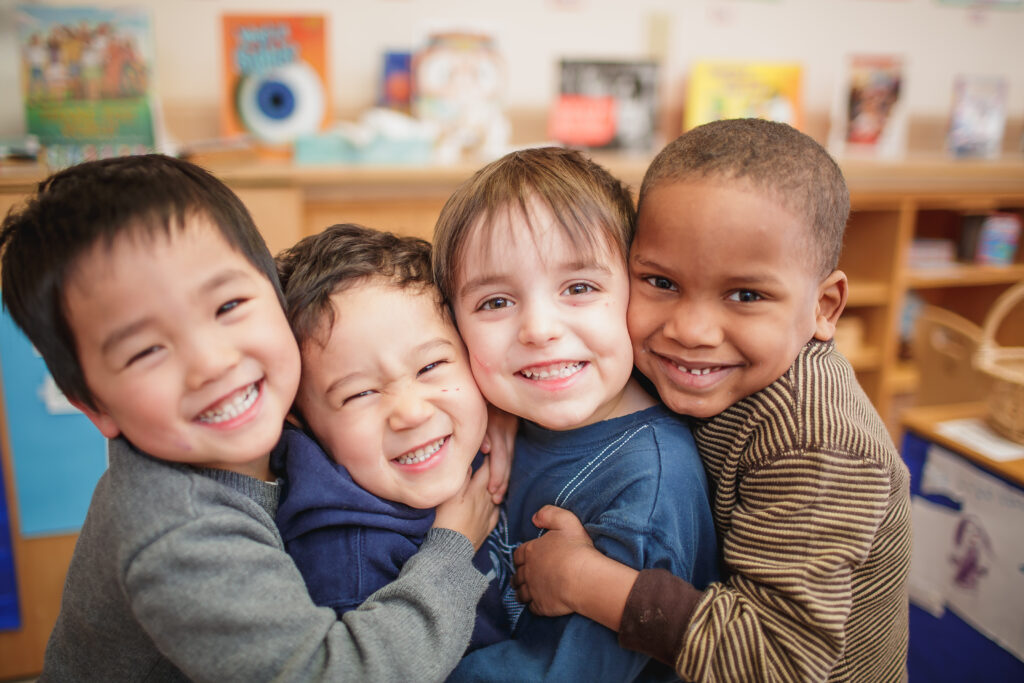
Referenced in this episode:
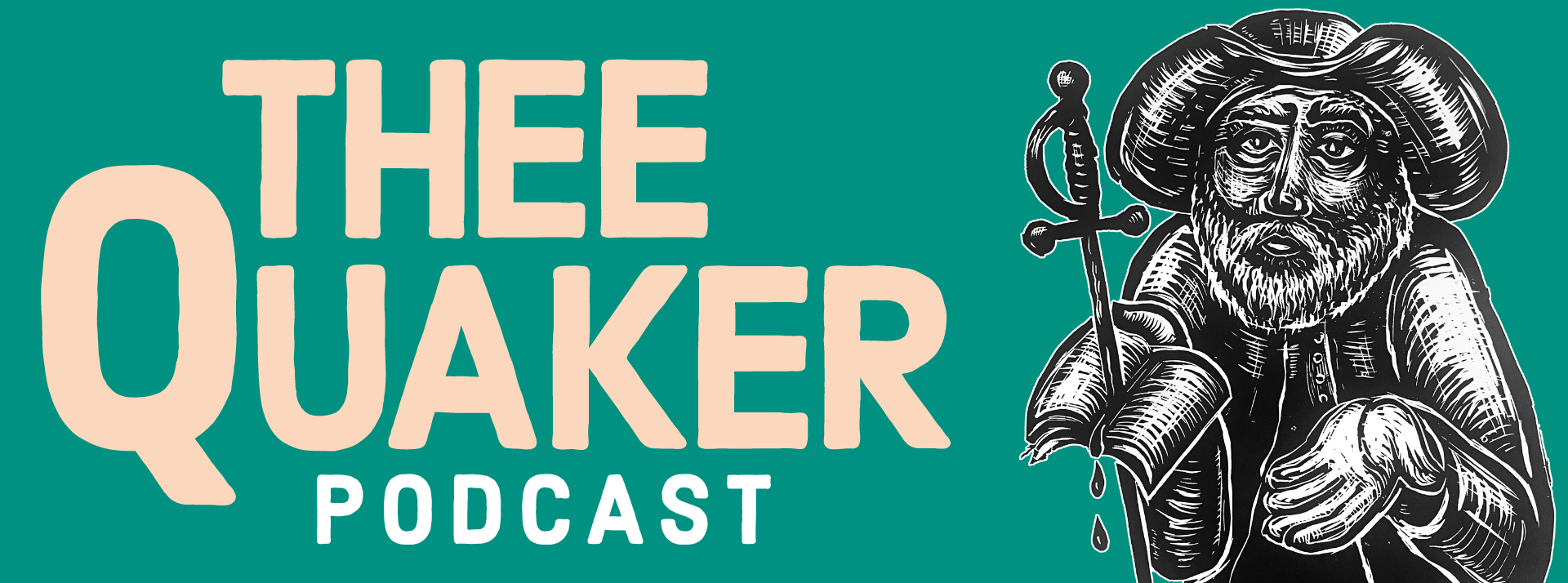
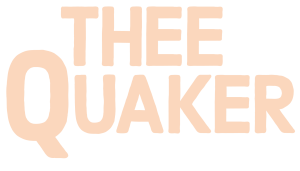
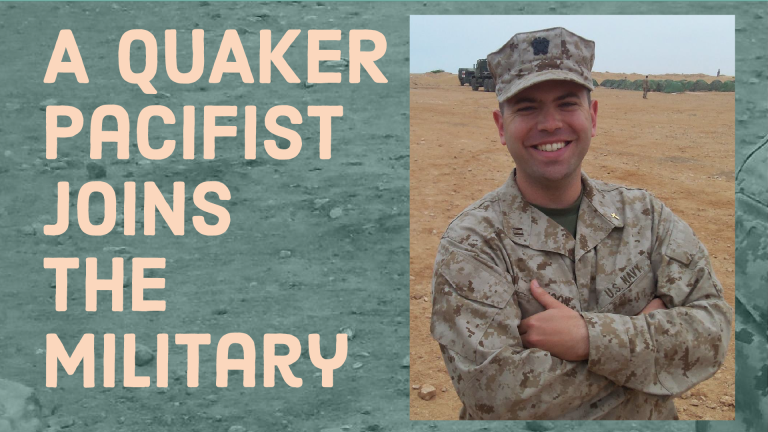
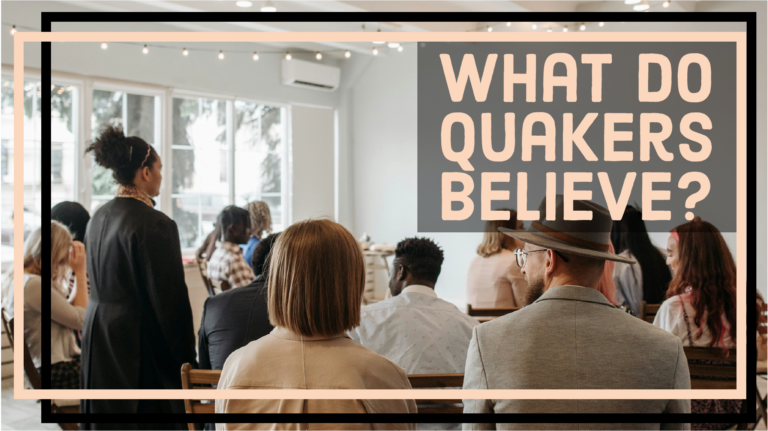
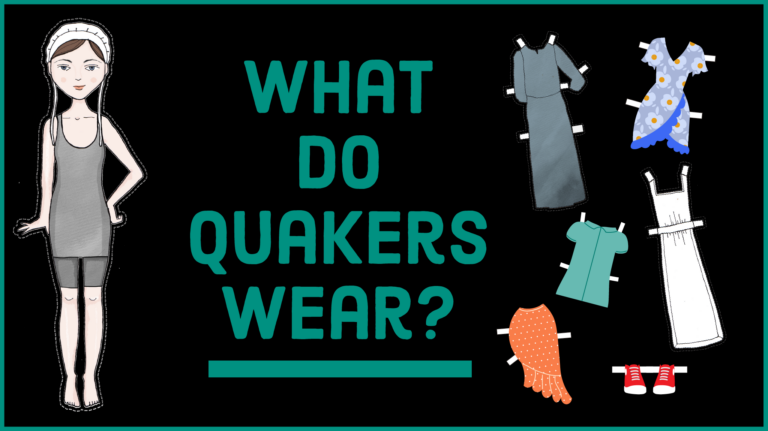
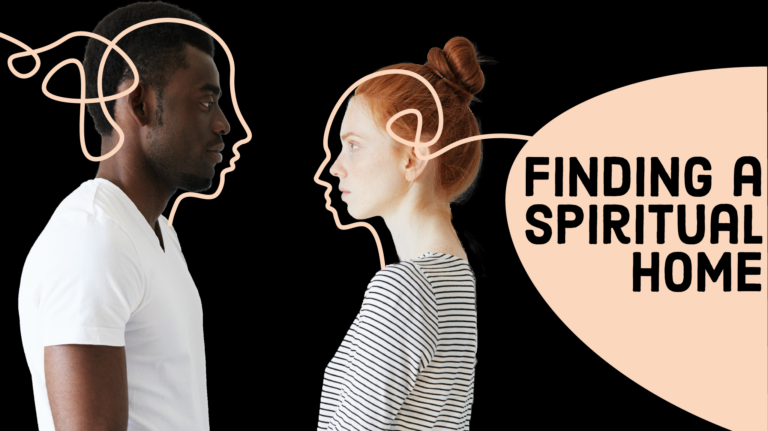
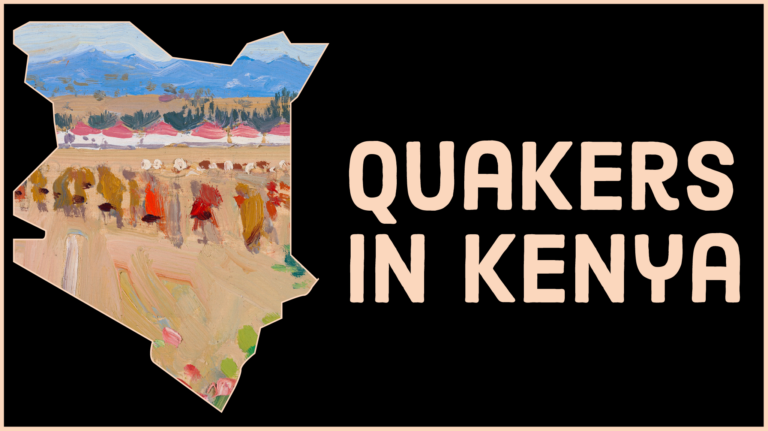

Thank you so much for this wonderful encapsulation of so much that Friends Center is about. I serve on the Quaker Advisory Council, an honor for me and it is so important to get the word out about all that is going on. Listening to the podcast the spiritual sense of what one feels when walking in the door of Friends Center really comes through. Among so much more that you included.
Mary Lee Morrison, member Hartford CT Friends Meeting